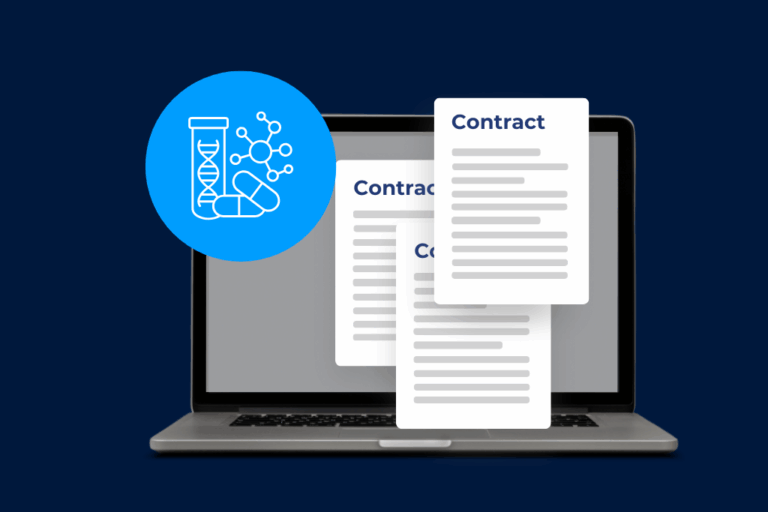SaaS, also know as Software as a Service is a rapidly growing way for software solutions to be implemented into companies. However, though SaaS is the talk of tech town and a billion-dollar business, not all users know how to actually characterize it.

As the shift to “the cloud” continues, plenty of questions are left unasked and unanswered. In 2021, the global revenue from the SaaS industry was $272.49 billion according to a study. Yet, reports keep showing figures of how worried leaders and executives can be about their data getting lost in the cloud. So, in this billion-dollar business, there is probably a need for the people affected to know what having data stored on a cloud-based service actually entails.
What is SaaS? Definition
Simply put, SaaS is a method of software delivery that allows data to be accessed from any device with an internet connection, often through a web browser or mobile interface. For this type of software and application, vendors store and maintain servers, code, and databases. The meaning of everything is stored “on the cloud”, is that physical servers are located somewhere off-premise, but the documents, software, data, etc. can be reached from anywhere, that helps provide a better experience for the community of digital users. To use most SaaS applications, companies simply log into their account through a web interface. Some platforms may require multi-factor authentication to align with zero trust security frameworks, ensuring greater data protection.
In addition to SaaS, the world of cloud computing includes IaaS (Infrastructure as a Service) and PaaS (Platform as a Service), offering businesses even more flexibility. While IaaS mainly provides virtualized computing resources like servers and storage, PaaS delivers a platform for software developers to build, deploy, and manage applications without the complexity of maintaining infrastructure. SaaS applications, by contrast, are ready-to-use and are accessed via the internet, removing the need to purchase expensive hardware or install traditional software on multiple computers.
The opposite of SaaS is on-premise servers. This basically means that a company installs their own servers to store the software and data on, which also means being responsible for it all (maintaining, updating, keeping it safe, etc.) once the installation is done.
Is there a difference between Cloud services and SaaS?
Yes, there is, but it is not incredibly significant. SaaS is a cloud service, but while all cloud programs are run by underlying software, SaaS refers specifically to business software applications that are delivered via the cloud. However, mentioning cloud computing/cloud services when discussing SaaS is relevant and works as a better-understood term.
Key Characteristics of SaaS Applications
Typically, SaaS applications are offered on a subscription model that requires only a simple sign-up, often using an email login. Below are a few defining features of modern SaaS products and platforms:
Why do companies prefer SaaS?
Seeing how many businesses change their software access to SaaS, it is sure the advantages of using a software solution on the cloud are plenty. Not only do companies get rid of the investment put into extensive hardware that is needed to host the software at their own locations. It also allows corporations to outsource most of the IT responsibility, as SaaS vendors normally take care of everything related to the software.
The main advantages of SaaS include:
- Users can access applications anytime, anywhere
- Companies can scale operations quickly and flexibly
- Reduces the burden on internal IT teams
- Helps save costs by eliminating the need for on-site infrastructure
- SaaS providers offer regular updates and security enhancements
- Data centers ensure high availability and disaster recovery
- Improved accessibility for remote teams and also small businesses
Additionally, SaaS solutions offer flexibility, lower upfront costs, and faster deployment compared to traditional systems. Sales teams, Marketing, Legal and other departments benefit from cloud collaboration tools as it improves networking, performance and trust between departments.
Cost savings are another critical factor. When using cloud computing services, companies typically achieve significant savings compared to maintaining on-premise solutions. Most SaaS options also follow a “pay as you go” model, allowing businesses to pay monthly for what they use instead of making large upfront investments. In many cases, subscription-based pricing makes it easier for both public and enterprise clients to manage budgets.
Data Management in SaaS Models
The main responsibility for hosting and protecting the data lies with the SaaS providers, who use high-security data centers to ensure uptime and backup. Trusted providers do not sell or share customer information, but companies need to know the terms outlined in their contracts. The transparency of service agreements, strong privacy policies, and easy-to-use access models are key reasons why many businesses prefer SaaS instead of traditional, on-premise systems.
The big question: who owns the SaaS data?
Just because a SaaS vendor often takes care of all the management and maintenance, it doesn’t mean that they are the owners of the data being stored. It is even quite unusual for a SaaS vendor to insist that they will have ownership of the data. Though all vendors are different, this will most often be negotiated when a service legal agreement (SLA) is drawn up.
Having the software on a cloud doesn’t mean the data isn’t accessible either. Most SaaS vendors are open to letting companies export data and back it up locally any time they need or want.
Conclusion
In today’s business environment, the rise of SaaS has reshaped how users and companies interact with software. Adopting SaaS services streamlines operations, enhances security, and reduces costs tied to maintaining internal infrastructure. SaaS applications are increasingly favored by executives seeking efficiency, flexibility, and reliability.
In the SaaS model, the provider manages everything from software development to security updates, relieving businesses from the burden of maintaining on-site computers. Many companies learn that using SaaS leads to more scalable solutions and faster innovation at lower upfront costs.
From customer relationship management to resource planning and machine learning, the benefits of SaaS continue to grow. Leading SaaS companies offer flexibility and power, helping customers get started quickly with new apps and tools and thus increase their performance. Enterprises use these platforms to create greater value while continuously receiving upgrades and new versions of their apps.
As the future of SaaS unfolds, businesses must review terms of use and service agreements carefully to protect customer rights and data ownership. Trusting a SaaS provider with critical information demands confidence in security and a full understanding of the SaaS architecture and delivery model. SaaS is not just a technology trend, it’s a transformative shift in how modern businesses view software products, service relationships, and development tools.
Searching for a Legal SaaS Solution? DiliTrust offers a single platform with all the legal and governance features you’re looking for!


